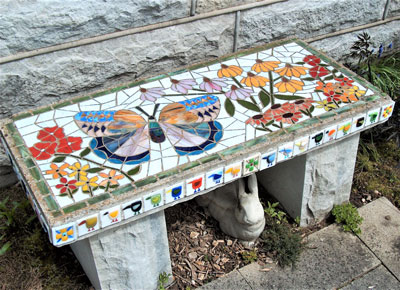Marvelous mosaics
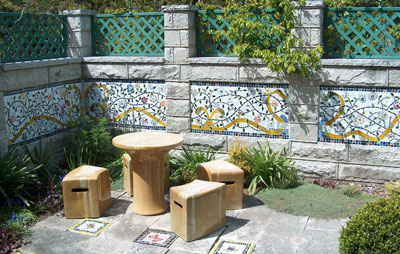
If you like jigsaw puzzles, chances are you like mosaics. Both rely on small pieces of material to express a scene, object, or pattern. Both can be intricate or simple in their design, and, often, if you look closely, both reveal additional details that you may have missed at first glance.
When it comes to garden themes, however, there’s a big difference between jigsaw puzzles and mosaics: jigsaw puzzles are good at depicting beautiful gardens, mosaics excel at making gardens more beautiful.
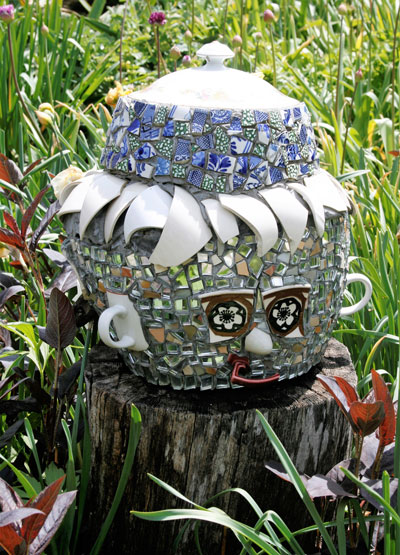
Their ability to add charm, color, and character to landscapes along with their tough-as-nails characteristics help account for mosaics’ long and impressive legacy. Their story starts 4,000 years ago in Mesopotamia where artisans used small colored objects to decorate temples. Romans adorned walls, ceilings, and floors with mosaics that depicted scenes of everyday life. In Greece, pictorial mosaics told stories. In China, garden pathways consisting of precisely placed pebbles symbolized nature.
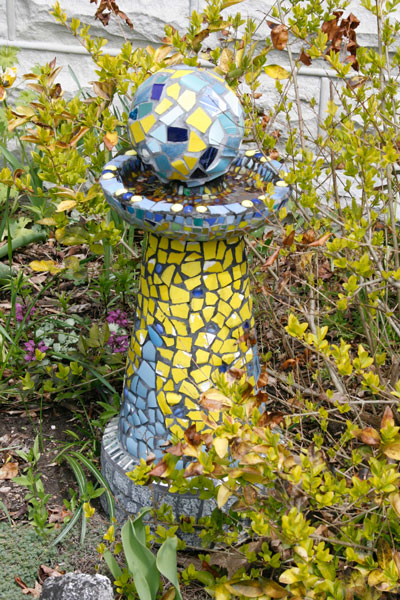
Now, as then, artisans construct their mosaic masterpieces by inlaying small pieces of tile, glass, shells, pebbles, found objects, and other materials (collectively referred to as tesserae) into a bed of cement, plaster, or adhesive on a hard surface. Grout is used to fill spaces between the tesserae. Basic mosaic-making supplies include tile nippers, trowel, palette knife, tesserae, adhesive, and powdered tile grout. Safety goggles, rubber gloves, and a dust mask are recommended. Small projects can be completed in an afternoon; large projects may take several days. (Instructions and tips are readily available online.)
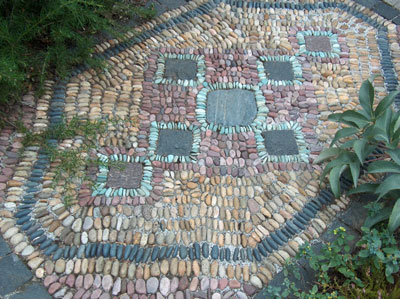
The best part about adding mosaics to gardens is the art form’s versatility. Stepping stones and birdbaths, tables and flower pots, and benches and fences: items large and small welcome the colors, patterns, and textures that mosaic art brings. And whether you want to personalize, emphasize, or dramatize an item, mosaic art offers a chance to express your creativity.
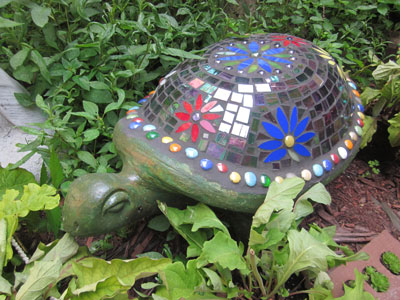
Bits and pieces
• The word mosaic means “pattern of pieces.” It is of English origin.
• World-renown mosaic artist Antoni Gaudi decorated entire buildings in Barcelona, Spain. He relied heavily on recycled and found materials to construct his tourist-attracting mosaic installations.
• In Turkey, archaeologists excavated a mosaic measuring 10 feet wide and 23 feet long. It consisted of 3,147 stones. Estimated to be some 3,500 years old, it numbers among the world’s oldest mosaics.
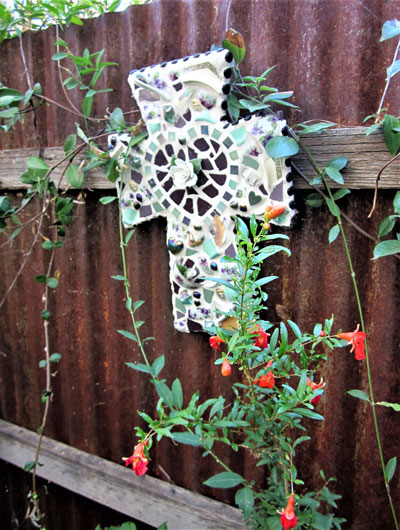
NOTE: First four images taken in Karin Overbeck’s garden. See following paragraph.
Karin Overbeck’s mosaic showcase
On a visit to Karin Overbeck’s schoolhouse garden in Door County, Wisconsin, I discovered mosaics of every size, subject, and shape. The talented mosaic artist’s work decorates benches, walls, doors, stepping stones, and more. A former schoolyard surrounds her home, the historic Evergreen School, a one-room brick building constructed in 1905.

